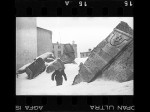 The Lodz Ghetto was the second largest (after the Warsaw Ghetto) of more than 1,000 ghettos created to corral Jews in cities as the first step in the “cleansing,” ie, extermination, of European Jewry. Conditions were appalling by design, so that the overcrowding, disease and starvation would do the Nazi’s murderous work for them. Starting in 1942, ghetto residents were regularly deported to concentration camps. Chelmo, the first extermination camp with a gassing system (trucks, not chambers), opened in December of 1941 just 30 miles from Lodz; its first victims came from the Lodz Ghetto, 70,000 of them in 1942 alone.
The Lodz Ghetto was the second largest (after the Warsaw Ghetto) of more than 1,000 ghettos created to corral Jews in cities as the first step in the “cleansing,” ie, extermination, of European Jewry. Conditions were appalling by design, so that the overcrowding, disease and starvation would do the Nazi’s murderous work for them. Starting in 1942, ghetto residents were regularly deported to concentration camps. Chelmo, the first extermination camp with a gassing system (trucks, not chambers), opened in December of 1941 just 30 miles from Lodz; its first victims came from the Lodz Ghetto, 70,000 of them in 1942 alone.
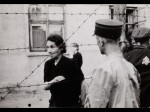 Because the Lodz Ghetto was uniquely productive — its factories produced uniforms and other materials for the war effort — it lasted longer than any other World War II ghetto, from 1940 until 1944. In August of 1944 it too was liquidated; everyone was rounded up and sent to their deaths, most of them to Auschwitz-Birkenau. By the end of the war, more than 200,000 Jews had passed through the Lodz Ghetto on, their way to almost certain death at Chelmno and Auschwitz. When the Red Army liberated Lodz on January 19th, 1945, only 877 survivors, 12 of them children, emerged from their hiding places in the ghetto. Out of the 223,000 Jews who lived in Lodz before Hitler’s invasion of Poland, just 10,000 survived the war.
Because the Lodz Ghetto was uniquely productive — its factories produced uniforms and other materials for the war effort — it lasted longer than any other World War II ghetto, from 1940 until 1944. In August of 1944 it too was liquidated; everyone was rounded up and sent to their deaths, most of them to Auschwitz-Birkenau. By the end of the war, more than 200,000 Jews had passed through the Lodz Ghetto on, their way to almost certain death at Chelmno and Auschwitz. When the Red Army liberated Lodz on January 19th, 1945, only 877 survivors, 12 of them children, emerged from their hiding places in the ghetto. Out of the 223,000 Jews who lived in Lodz before Hitler’s invasion of Poland, just 10,000 survived the war.
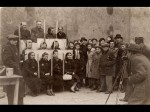 One of those survivors was Henryk Ross, a Polish Jew who before the war had been a journalist and sports photographer. He was employed as an official photographer for the Jewish Council, aka the Judenrat, ostensibly a self-governing body which administered the day-to-day operations of the ghetto and enforced Nazi orders. Working for the council’s the Department of Statistics, Ross’ job was to take pictures of the ghetto factories, demonstrating their productivity, and of the registered workers for their identification cards.
One of those survivors was Henryk Ross, a Polish Jew who before the war had been a journalist and sports photographer. He was employed as an official photographer for the Jewish Council, aka the Judenrat, ostensibly a self-governing body which administered the day-to-day operations of the ghetto and enforced Nazi orders. Working for the council’s the Department of Statistics, Ross’ job was to take pictures of the ghetto factories, demonstrating their productivity, and of the registered workers for their identification cards.
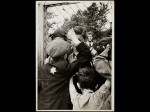 Ross and the other Department of Statistics photographer, Mendel Grossman, secretly took unauthorized photographs of the horrors all around them. Ross captured the deportations, destruction and deprivations — barefoot workers pushing carts of human excrement out of the ghetto (there was no plumbing or sewage), public executions, children torn from their parents during the Sperre, the September 1942 mass deportation of almost all
Ross and the other Department of Statistics photographer, Mendel Grossman, secretly took unauthorized photographs of the horrors all around them. Ross captured the deportations, destruction and deprivations — barefoot workers pushing carts of human excrement out of the ghetto (there was no plumbing or sewage), public executions, children torn from their parents during the Sperre, the September 1942 mass deportation of almost all 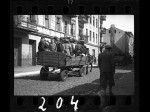 of the children under 10 to Chelmo where they would be murdered. He also captured small moments of daily life, even happy ones, amidst the nightmare, like young lovers kissing behind a shrub and a children’s birthday party. The variety and range of Ross pictures underscored the class divisions that persisted even in so extreme a context. His photos show the contrasts of ghetto life — the workers, the destitute, the well-fed and well-dressed elite.
of the children under 10 to Chelmo where they would be murdered. He also captured small moments of daily life, even happy ones, amidst the nightmare, like young lovers kissing behind a shrub and a children’s birthday party. The variety and range of Ross pictures underscored the class divisions that persisted even in so extreme a context. His photos show the contrasts of ghetto life — the workers, the destitute, the well-fed and well-dressed elite.
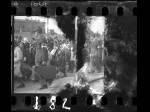 In the summer of 1944 when it became clear the Nazis were winding down operations in the ghetto and preparing for the final slaughter, Henryk Ross saw the writing on the wall. Not expecting to survive, he buried 6,000 negatives. His wife and a few select friends helped him, so they knew where Ross’ photographic treasure trove was hidden should he die. As it happened, Ross was not deported to the extermination camps. He was one of the 800 Jews ordered to clean the ghetto. Of course they Nazis were going to kill them all once the clean-up was done — they had eight mass graves dug already — but the Soviets arrived before they could get to it.
In the summer of 1944 when it became clear the Nazis were winding down operations in the ghetto and preparing for the final slaughter, Henryk Ross saw the writing on the wall. Not expecting to survive, he buried 6,000 negatives. His wife and a few select friends helped him, so they knew where Ross’ photographic treasure trove was hidden should he die. As it happened, Ross was not deported to the extermination camps. He was one of the 800 Jews ordered to clean the ghetto. Of course they Nazis were going to kill them all once the clean-up was done — they had eight mass graves dug already — but the Soviets arrived before they could get to it.
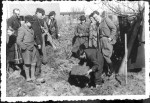 After the liberation of Lodz, Ross dug his negatives back up and found that more than half of them had survived. He later said of his fateful decision: “Just before the closure of the ghetto I buried my negatives in the ground in order that there should be some record of our tragedy, namely the total elimination of the Jews from Lodz by the Nazi executioners. I was anticipating the total destruction of Polish Jewry. I wanted to leave a historical record of our martyrdom.”
After the liberation of Lodz, Ross dug his negatives back up and found that more than half of them had survived. He later said of his fateful decision: “Just before the closure of the ghetto I buried my negatives in the ground in order that there should be some record of our tragedy, namely the total elimination of the Jews from Lodz by the Nazi executioners. I was anticipating the total destruction of Polish Jewry. I wanted to leave a historical record of our martyrdom.”
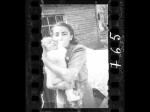 He certainly got his wish — his pictures were used as evidence in the 1961 trial of Adolf Eichmann — but he left a broader historical record than that, documenting the realities of life and death in the ghetto.
He certainly got his wish — his pictures were used as evidence in the 1961 trial of Adolf Eichmann — but he left a broader historical record than that, documenting the realities of life and death in the ghetto.
Ross’ collection of photographs and film was donated to the Art Gallery of Ontario (AGO) in 2007. The AGO has collaborated with the Museum of Fine Arts, Boston (MFA) to organize an exhibition of Henryk Ross’ Lodz Ghetto 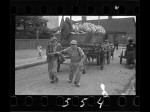 photographs, plus film of the Eichmann trial and Lodz artifacts like identification cards from the ghetto, notices and announcements. Memory Unearthed: The Lodz Ghetto Photographs of Henryk Ross debuted at the AGO last year. It will open at the MFA on March 25th and runs through July 30th, 2017.
photographs, plus film of the Eichmann trial and Lodz artifacts like identification cards from the ghetto, notices and announcements. Memory Unearthed: The Lodz Ghetto Photographs of Henryk Ross debuted at the AGO last year. It will open at the MFA on March 25th and runs through July 30th, 2017.
The AGO has created an exceptional website with more than 4000 images from the Henryk Ross collection. You can search by keyword and create an online collection of your own for the price of a free registration.